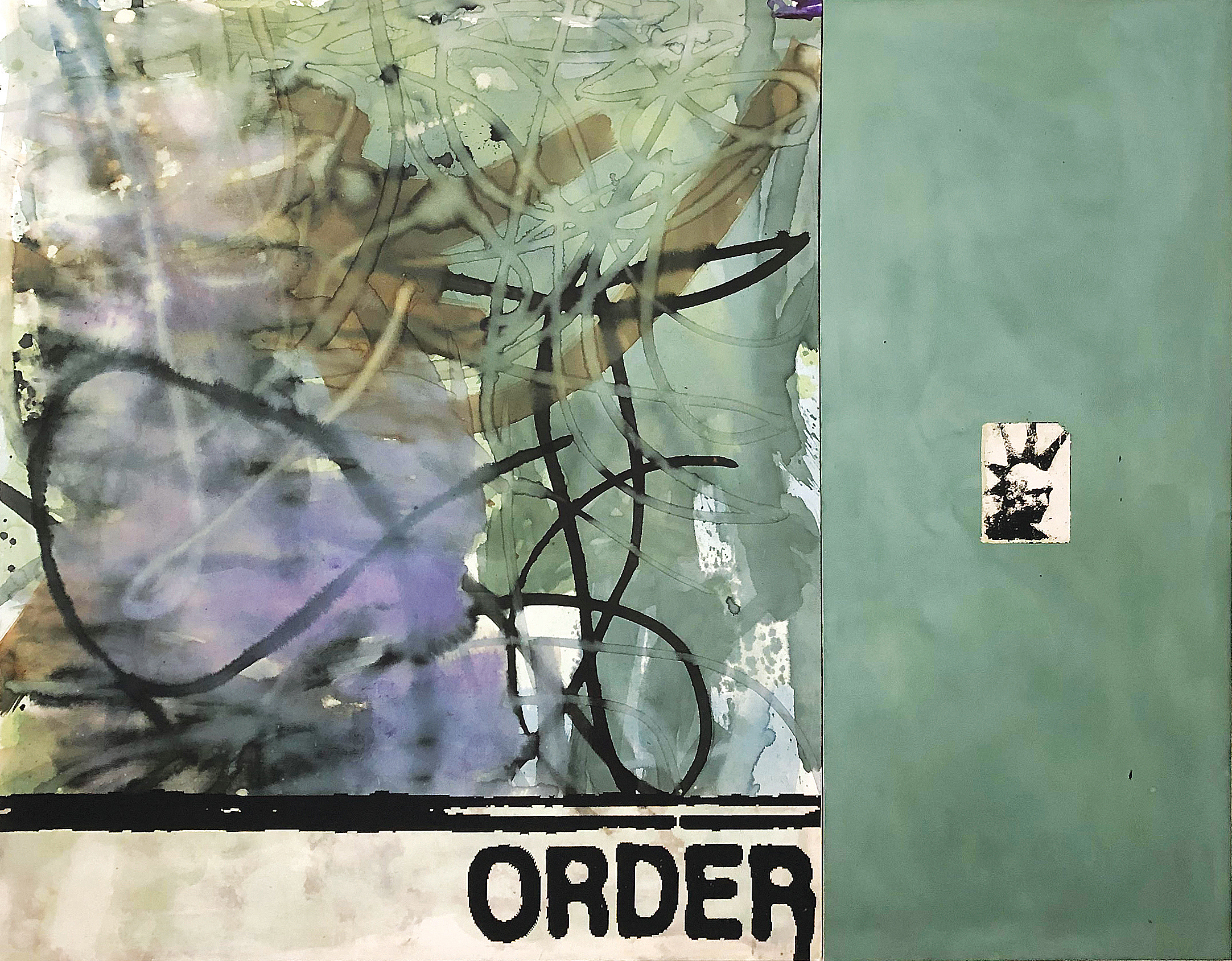Shoot the Lobster is pleased to announce AJ Kahn’s first New York solo exhibition, Woke Up And Wore What You Had On. Organized by Reilly Davidson.
AJ Kahn (b. 1996, Santa Cruz, CA) probes the machine of cultural production and draws out signs and symbols, which serve as the connective tissue between participants in particular scenes. In the large scale paintings, two panels are tasked with cataloging found images on one side and abstracting them on the other in an effort to understand the mechanics of visual trends. The referents are initially recognized as software, their abstract relatives as hardware. However, as the process is completed and left for consideration, this dynamic is problematized and up for constant negotiation - which came first, the chicken or the egg?
Kahn seeks autonomous painting within the rigid structure that the medium presupposes. His dyadic practice holds painterly romanticism alongside conceptual deliberations. Painting and printmaking are exploited in equal measure, minding the gap between the processes while figuring how and where to align their codes. His manual printing process welcomes human errors in contrast with those of Wade Guyton’s corrupt printers. Kahn assumes the roles of code generator and machine at once, internalizing a Guyton-like mode of image conception.
There is a sense of iconoclasm within Kahn’s practice as his subjects are not meant to be icons themselves, but rather, descendants of icons merely assuming the looks and attitudes of their predecessors. He sifts through generational aesthetics and the feelings borne from time-and-place based affiliations. The currency exchanged within and between members of different subcultural groups reflects the commodification of identity and the value in proving oneself “valid” within those groups. Kahn effectively divorces the subject from its context in order to reconstitute a presupposed “ORDER.” This word is excessively manipulated to the extent that it becomes a botched file and is then silkscreened onto each painting’s left panel. Feedback loops that recur within his art-objects reproduce those which occur within cultural and subcultural histories. This is a case study of data entry and its ripple effect.
Kahn notes that his engagement with painting is aligned with the operations of a chess match. The composition and the painter go back and forth in a series of moves until: Checkmate! Helen Frankenthaler professed that “A line, color, shapes, spaces, all do one thing for and within themselves, and yet do something else, in relation to everything that is going on within the four sides [of the canvas]. A line is a line, but [also] is a color... It does this here, but that there.” Kahn’s gesturalism and excited linework is allied with such AbEx players as a romantic move in his process.
In one composition Kahn recognizes the “pastiche aesthetic [as] the primary signifier of psychedelic culture,” per Mike Kelley’s observations on the community’s framework. In his 1999 paper “Cross Gender/Cross Genre” Kelley exposes the problematics of Hippiedom and its supposed utopianism as well as punk’s subsequent reaction with “the most extreme signs of decadent nihilism.” Kahn encodes this logic within Order_1_CrustKid, which sees a spikey-haired no-name set on the right panel, performing his role within the movement that carried out “the last gasp of avant-gardeism in Pop.”
It is critical to acknowledge that AJ Kahn incorporates sentimentalism within a much broader set of formal and semantic considerations. Romance is not an end point, but a particular move on the chessboard. Kahn’s selection and manipulation of his subjects also offers an unstable dimension, one that emphasizes and even performs corrupted data. What makes his project ever-prescient is its ability to transcribe the life cycle of a particular subculture and iterate its logic within another group’s framework.
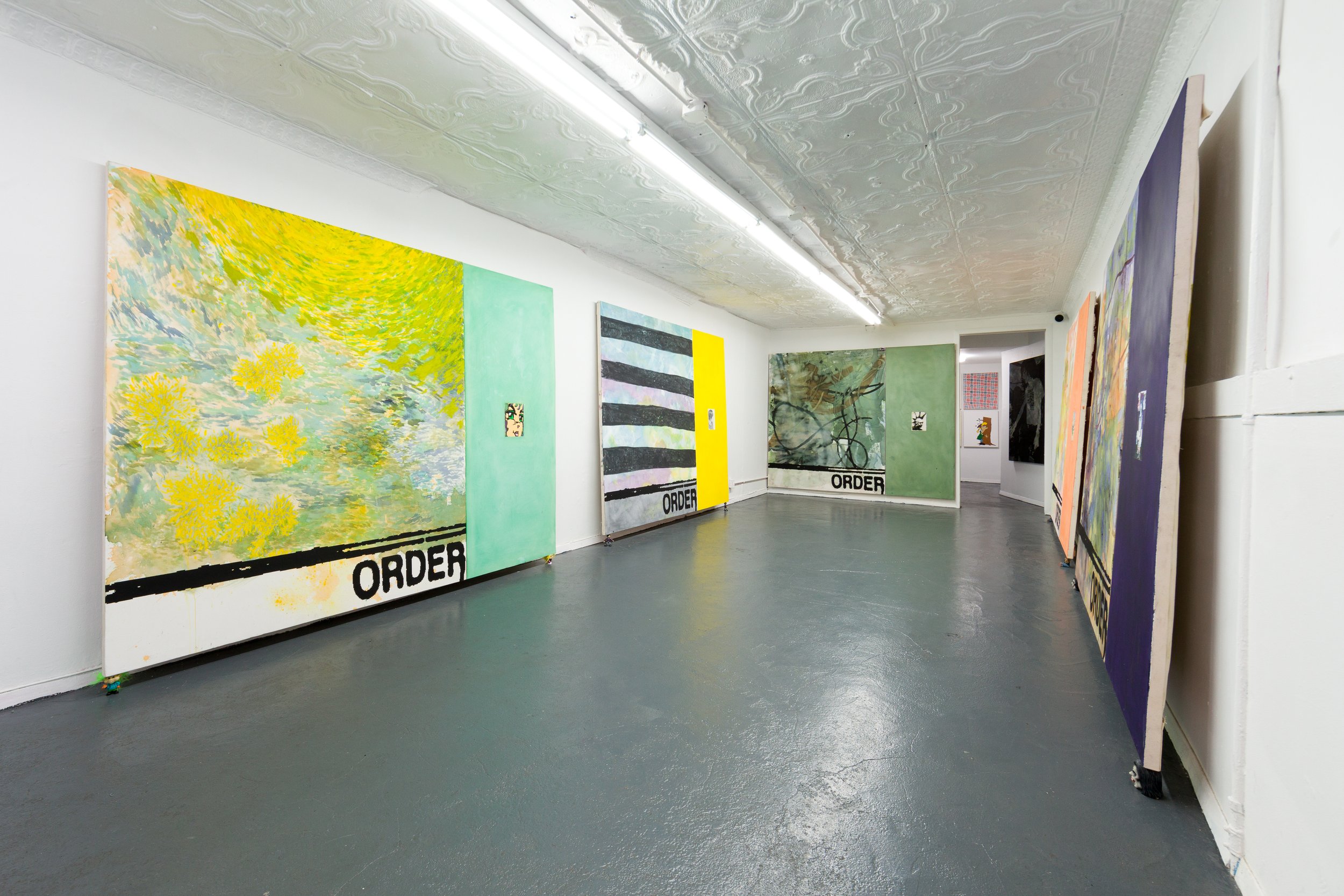
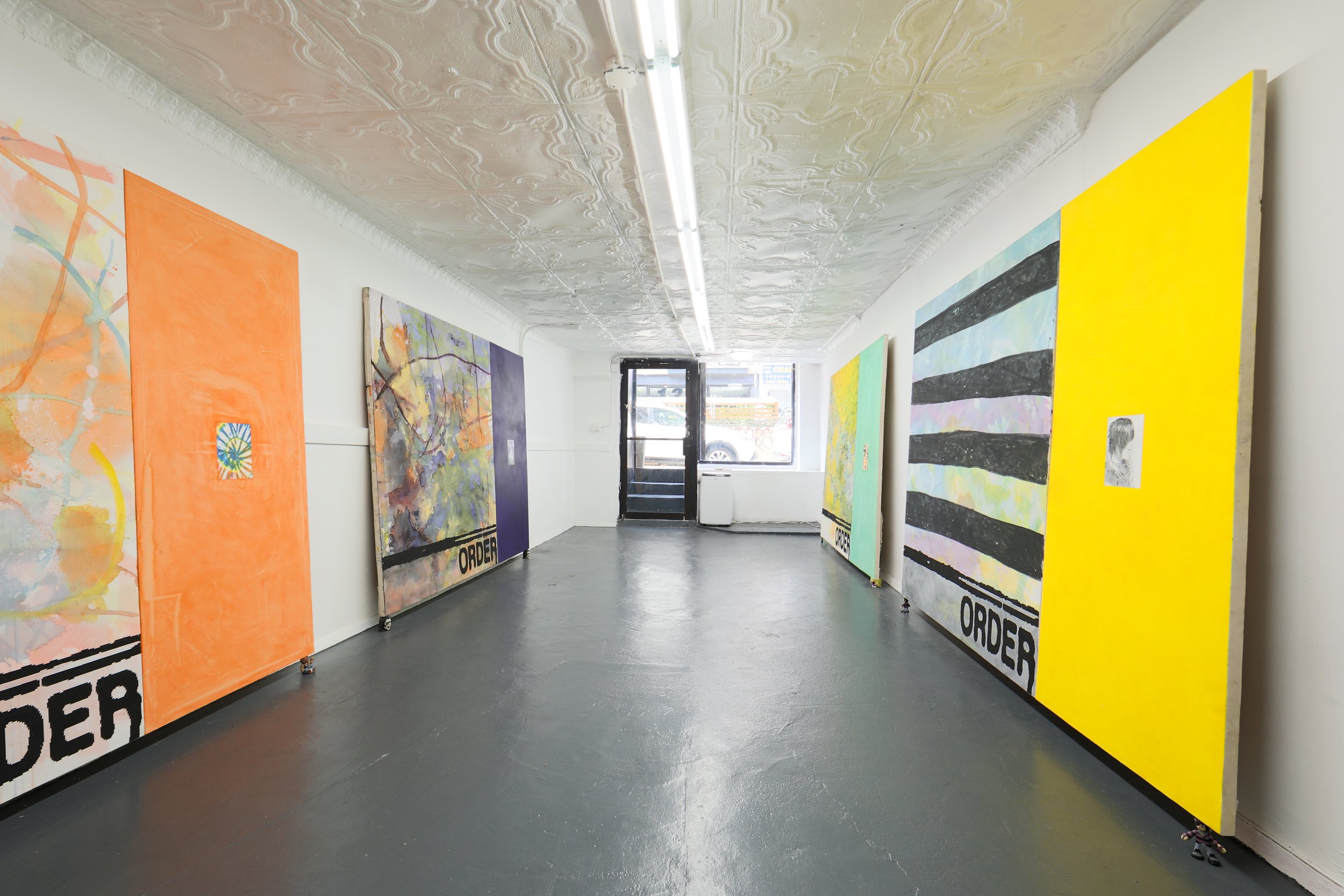
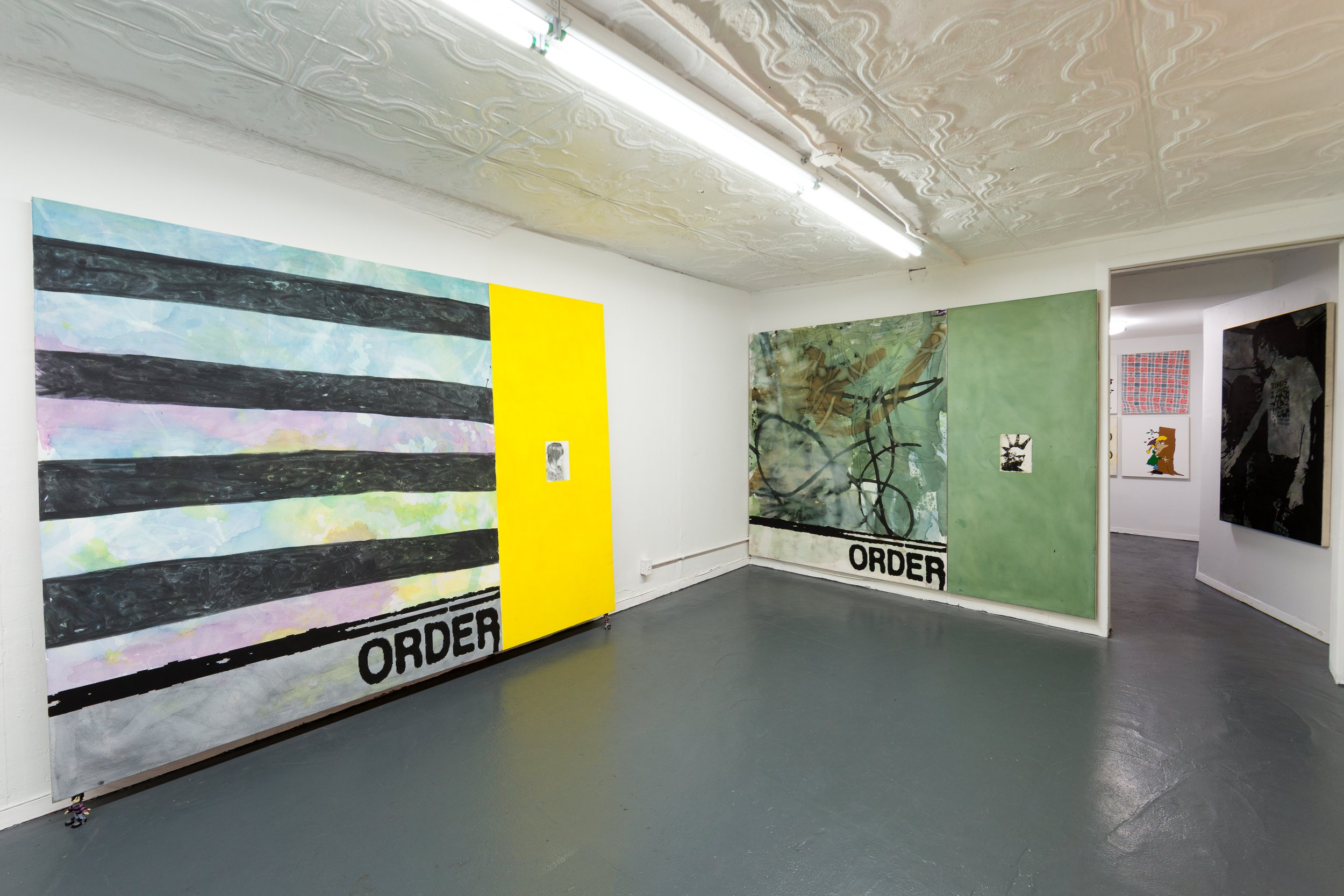
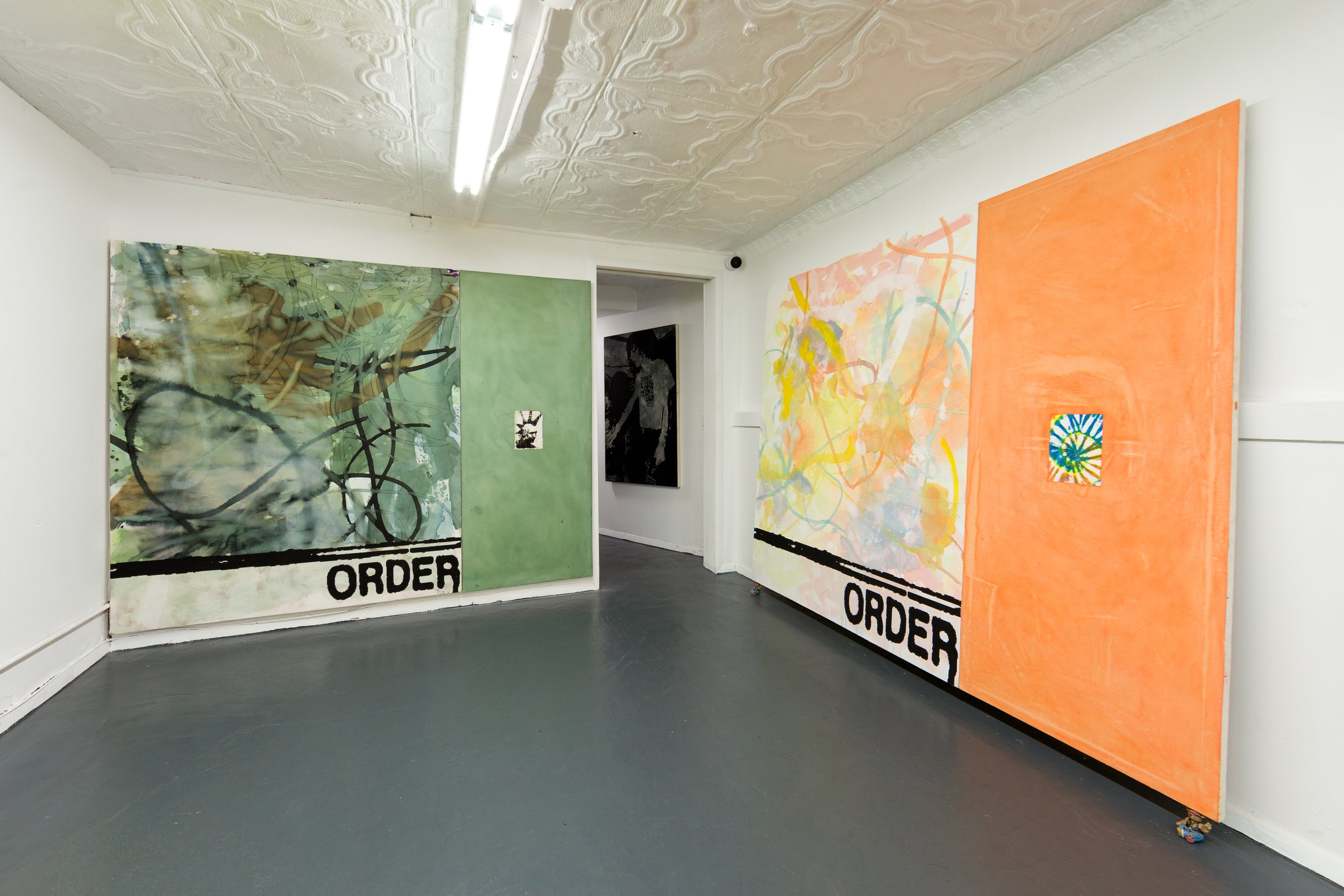

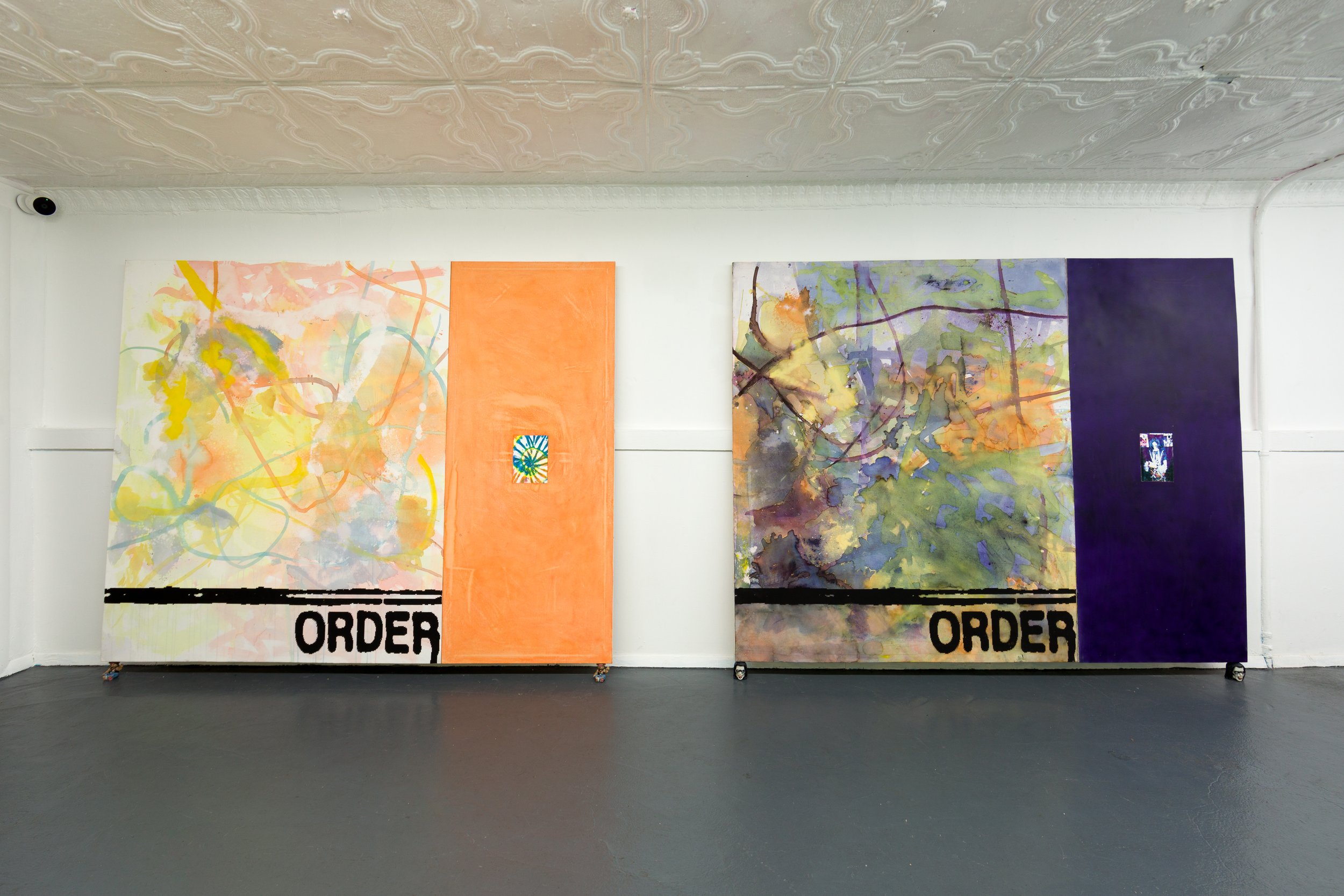
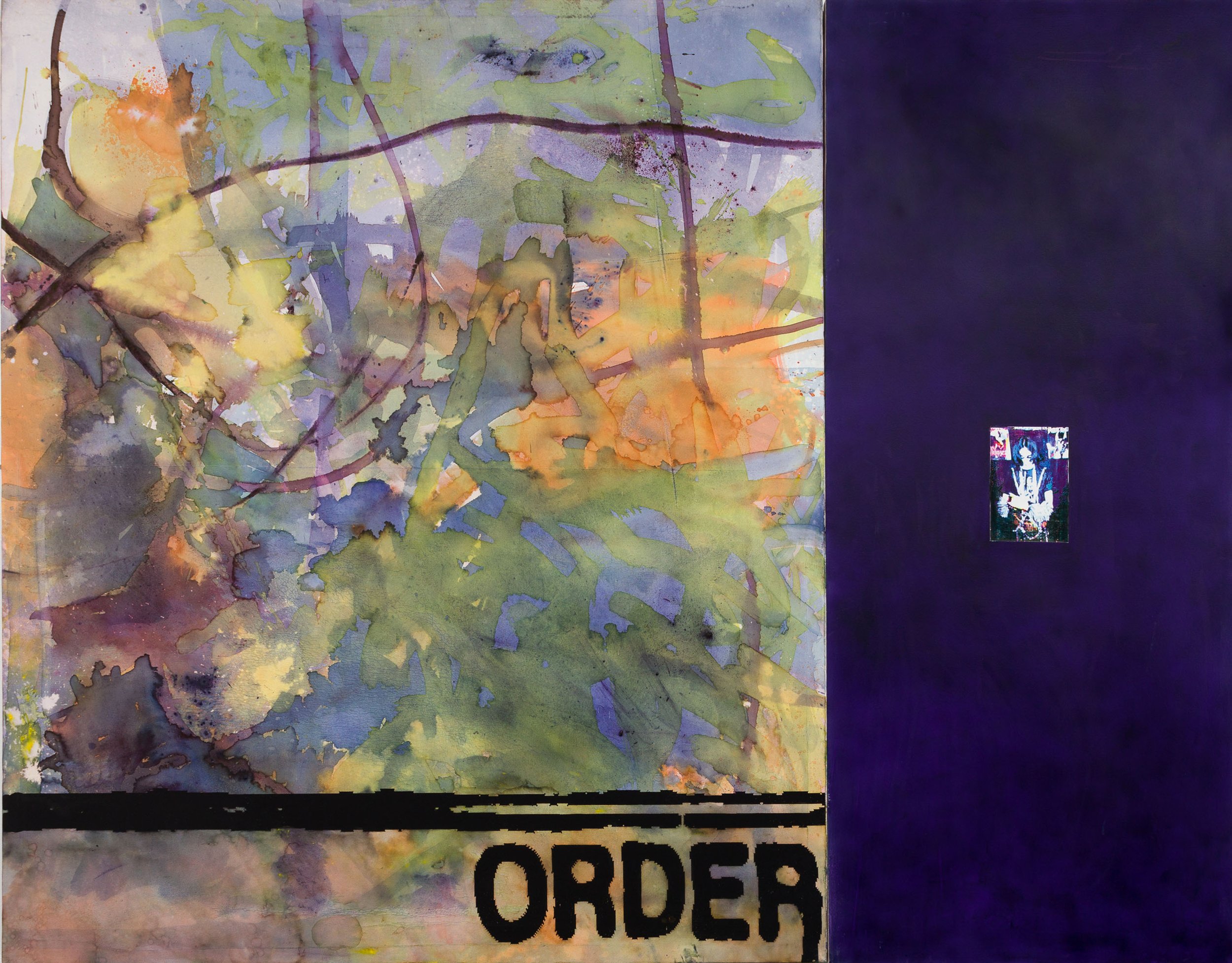
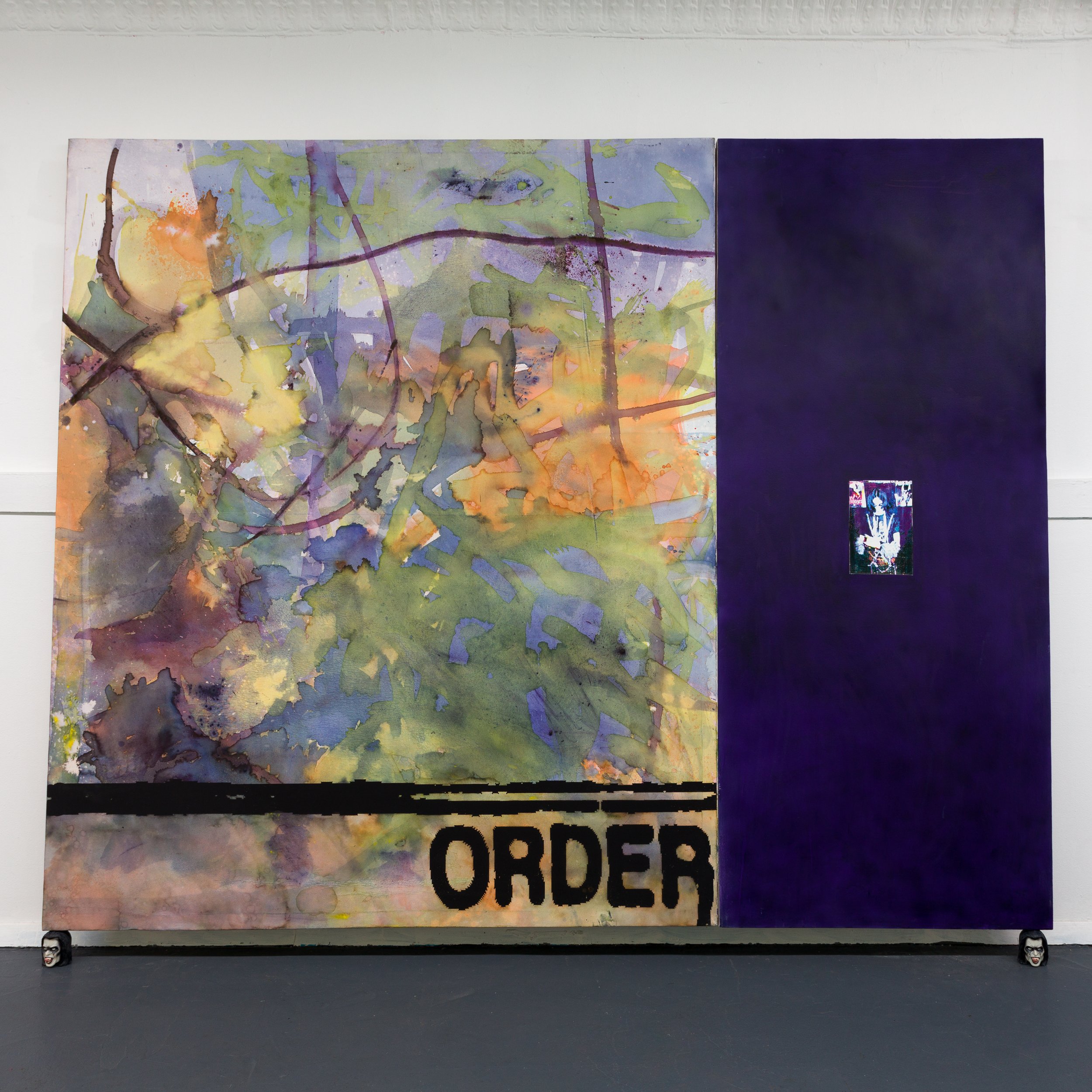
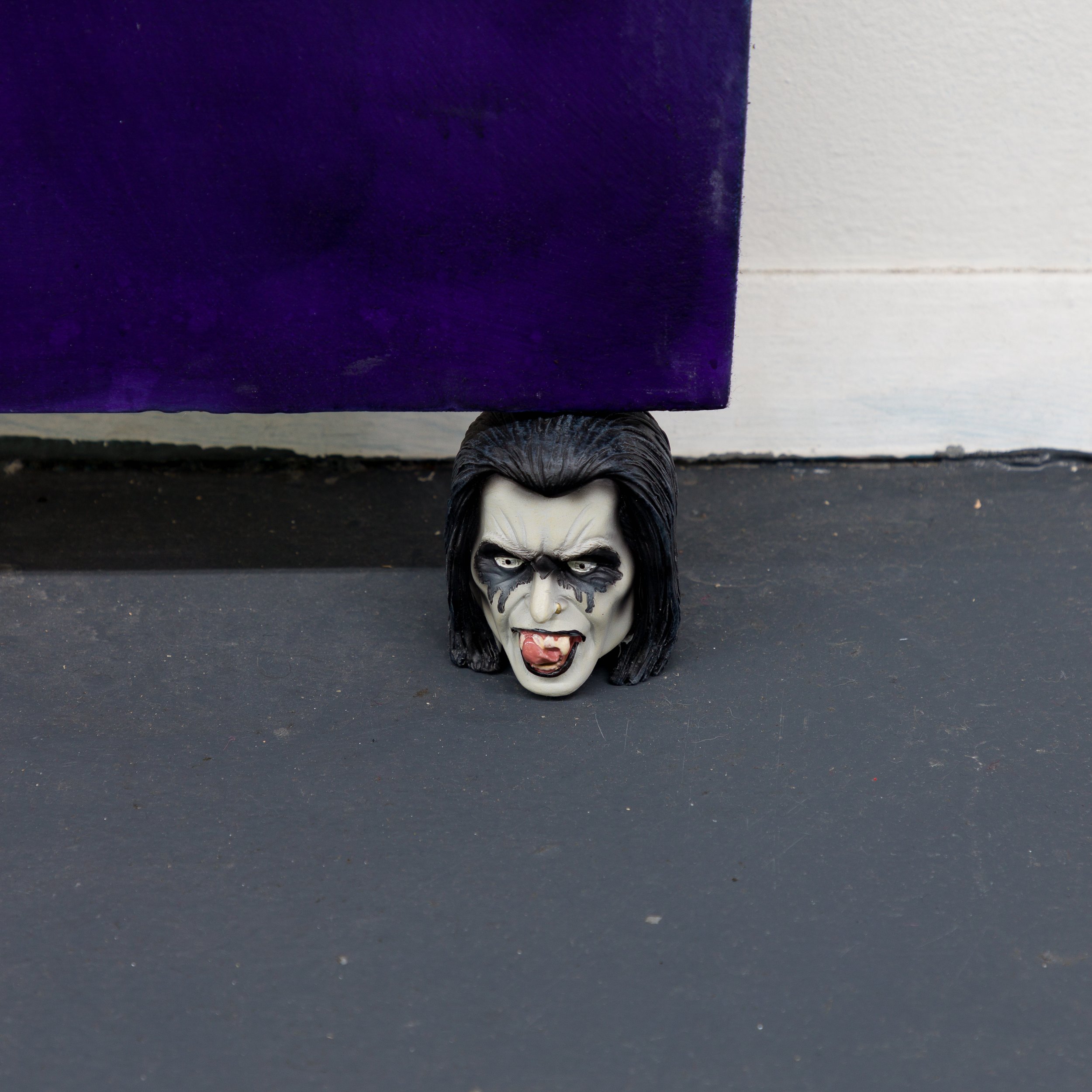
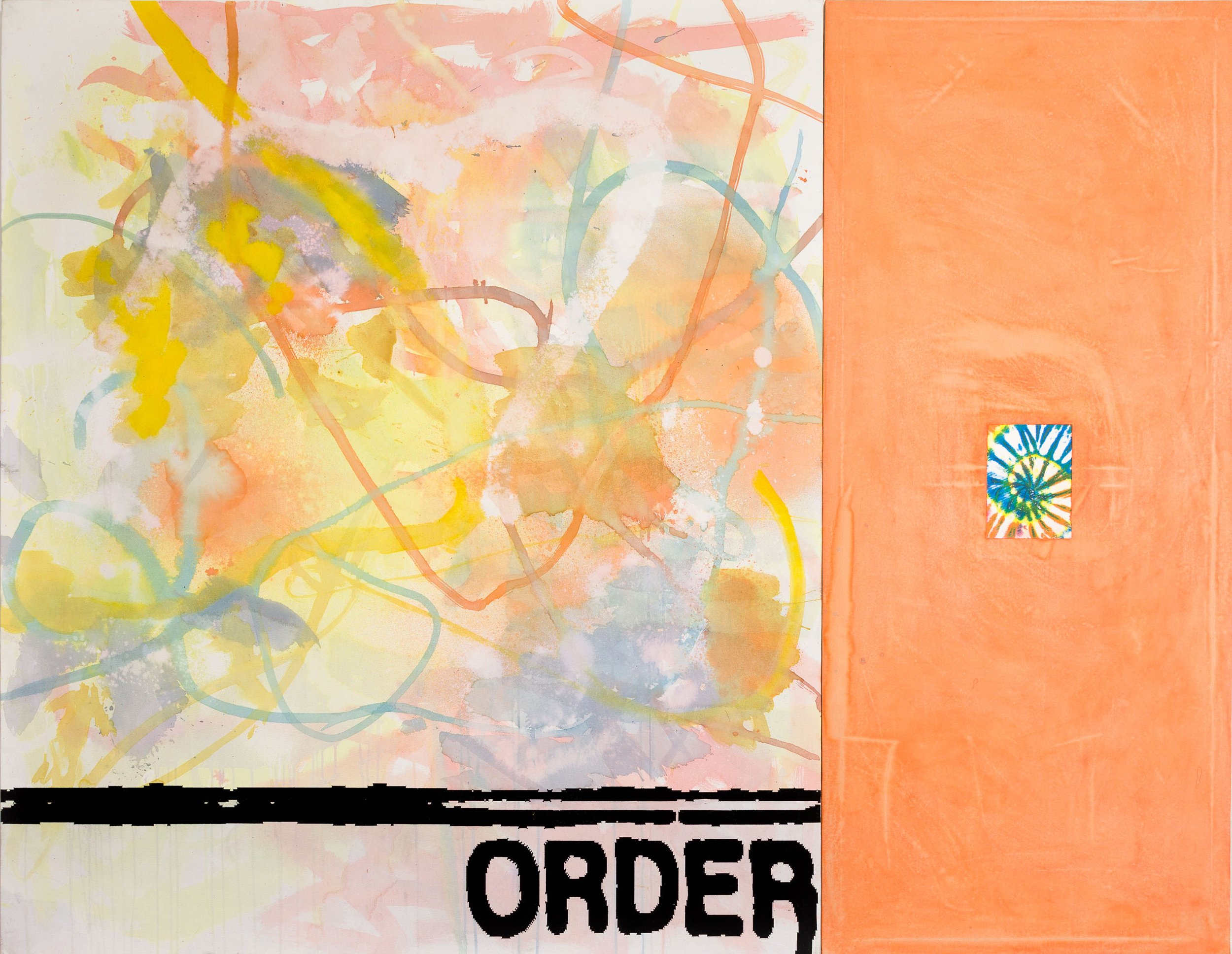
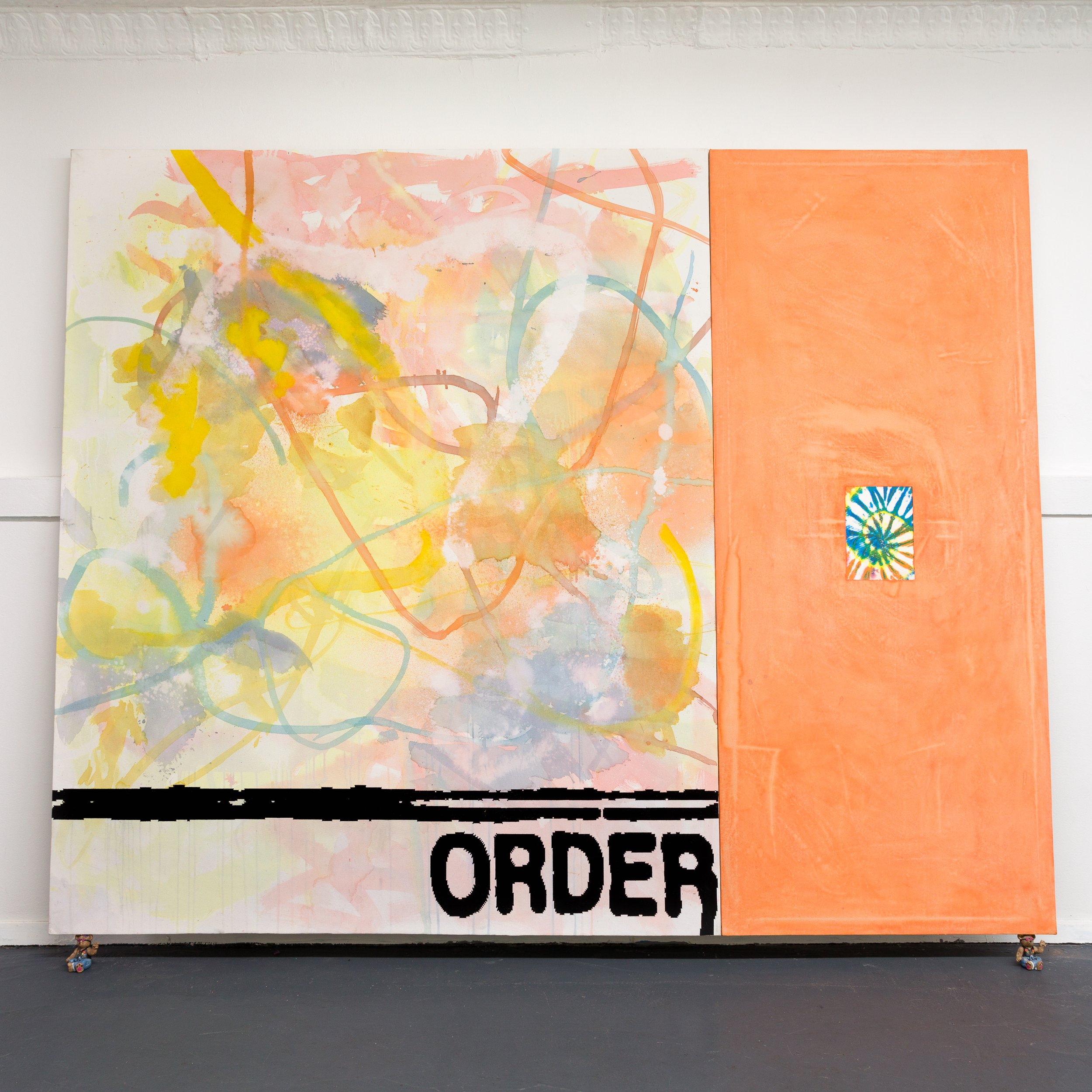
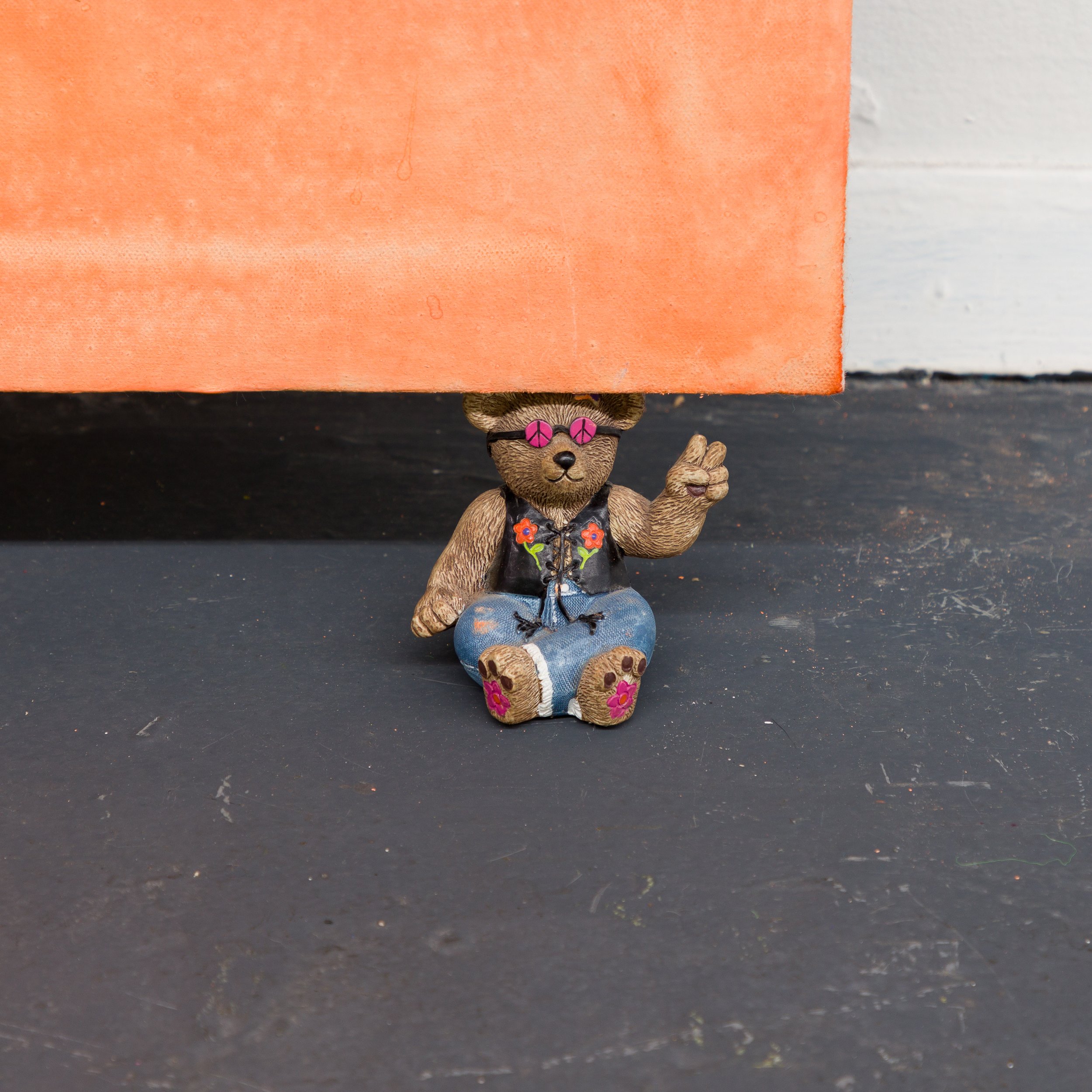
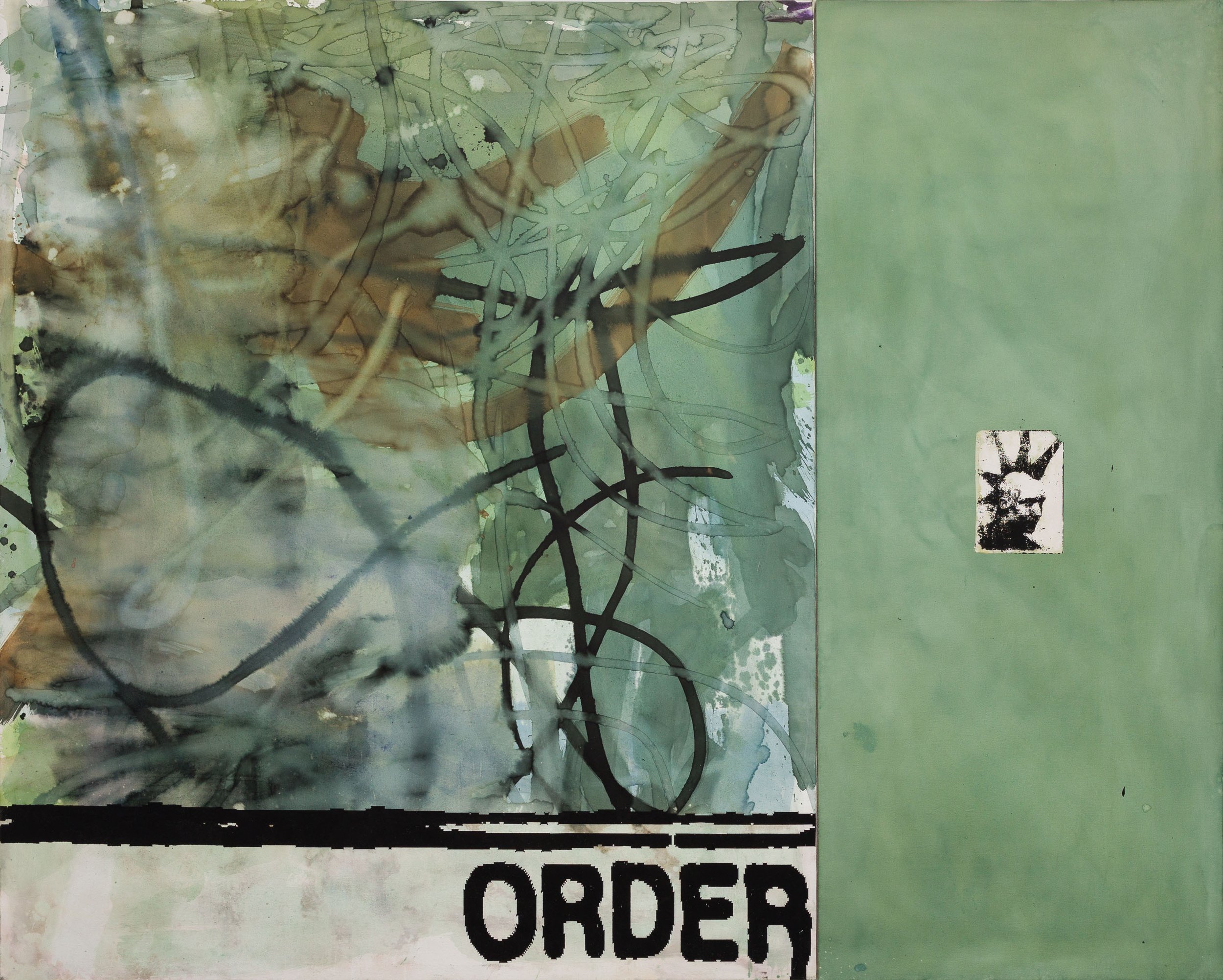
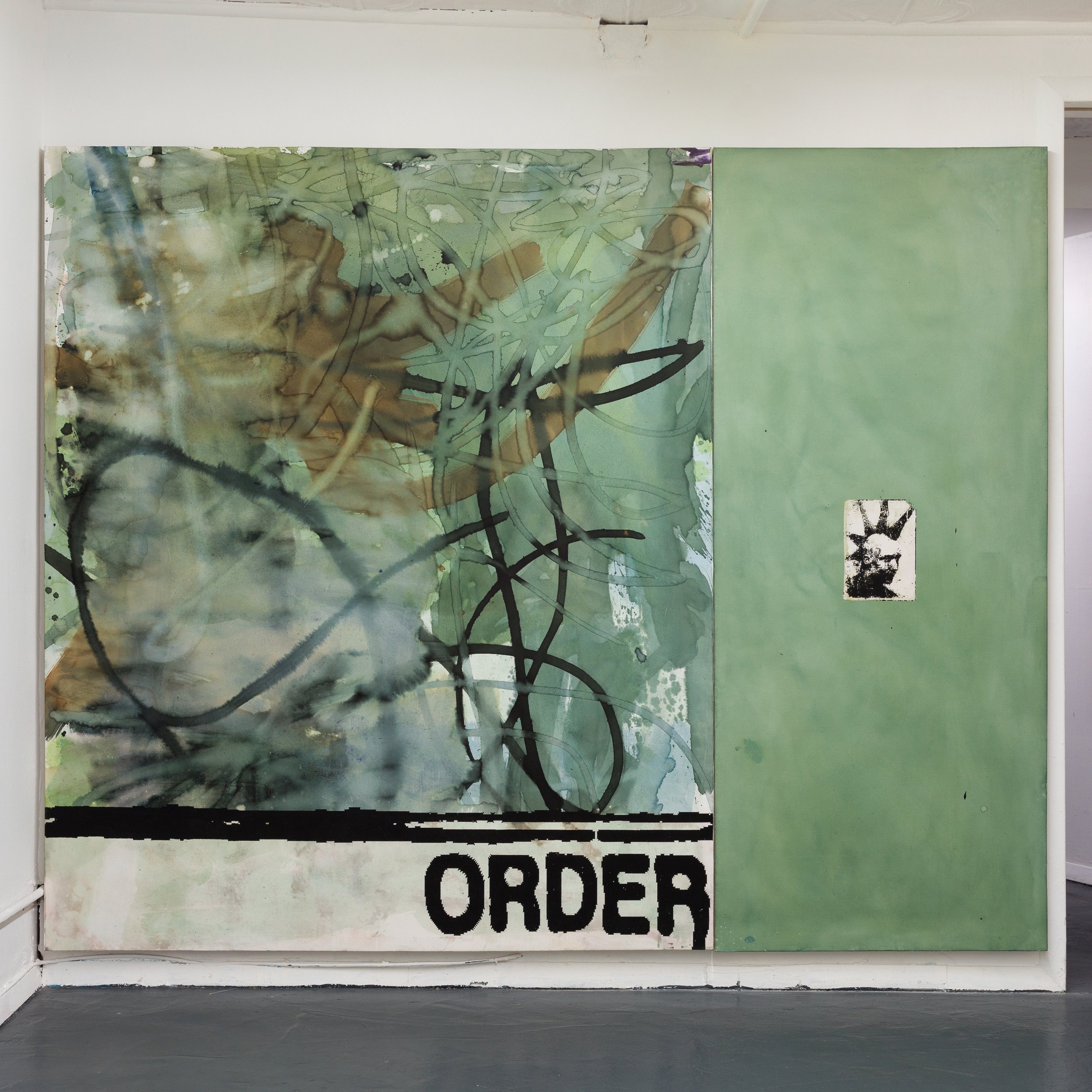

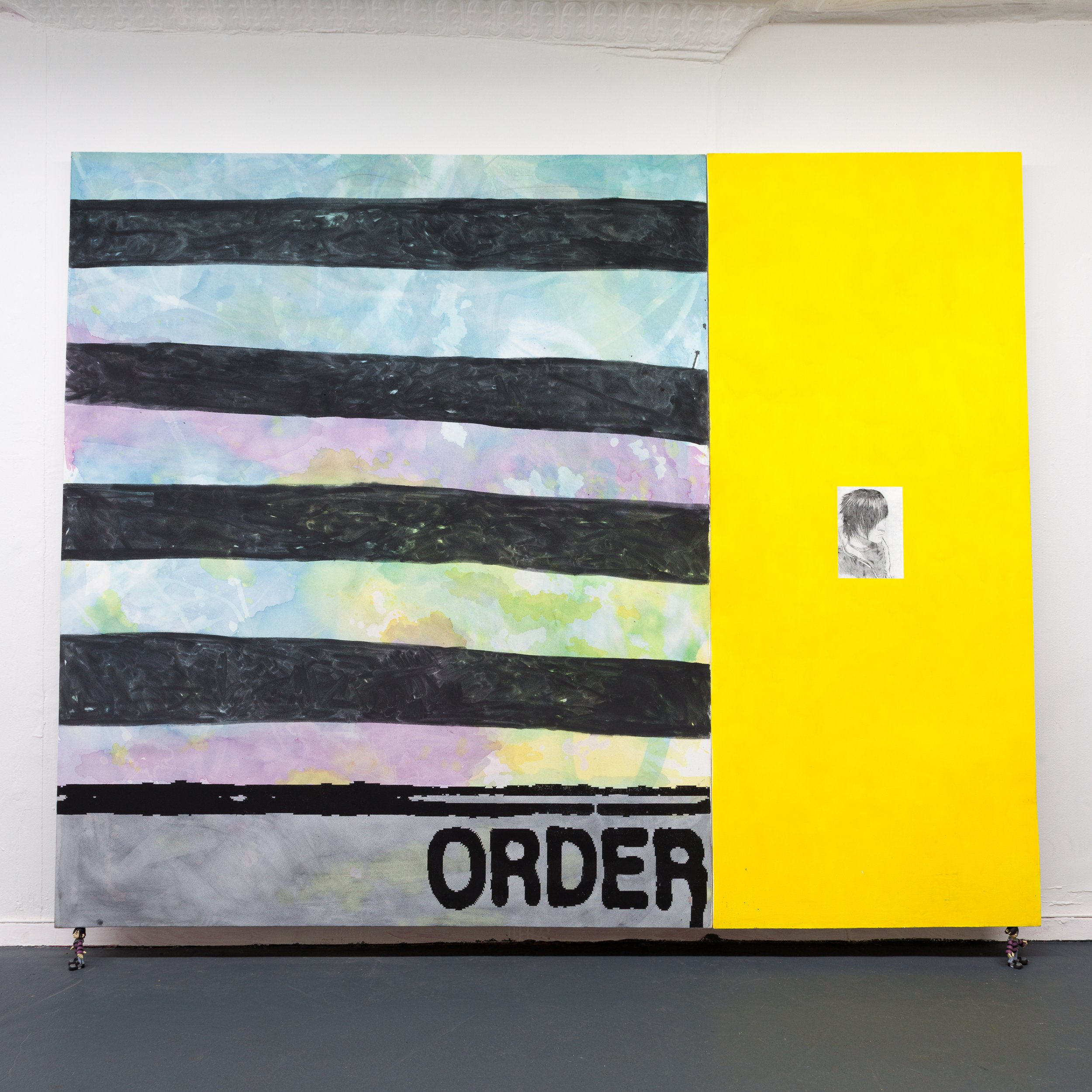
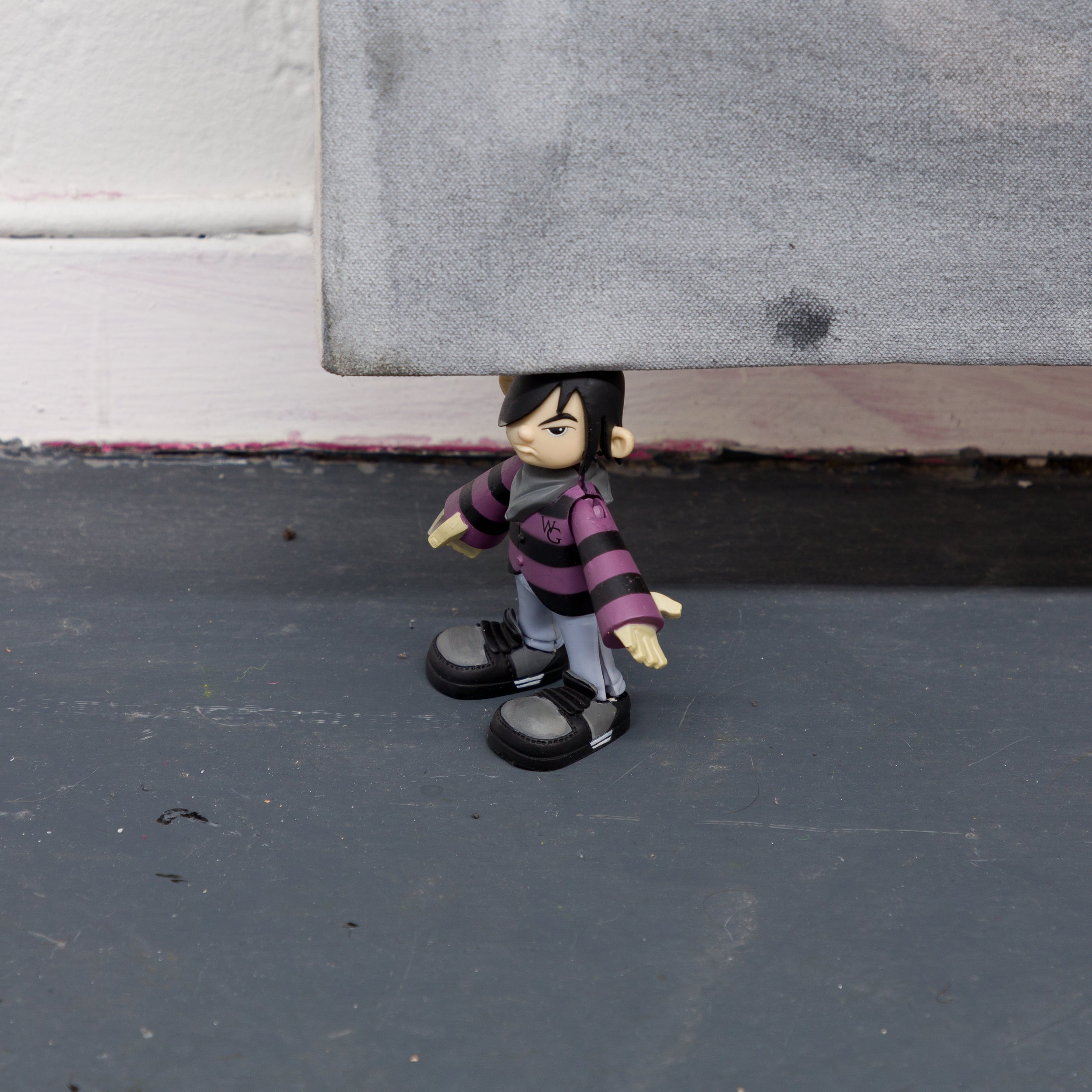
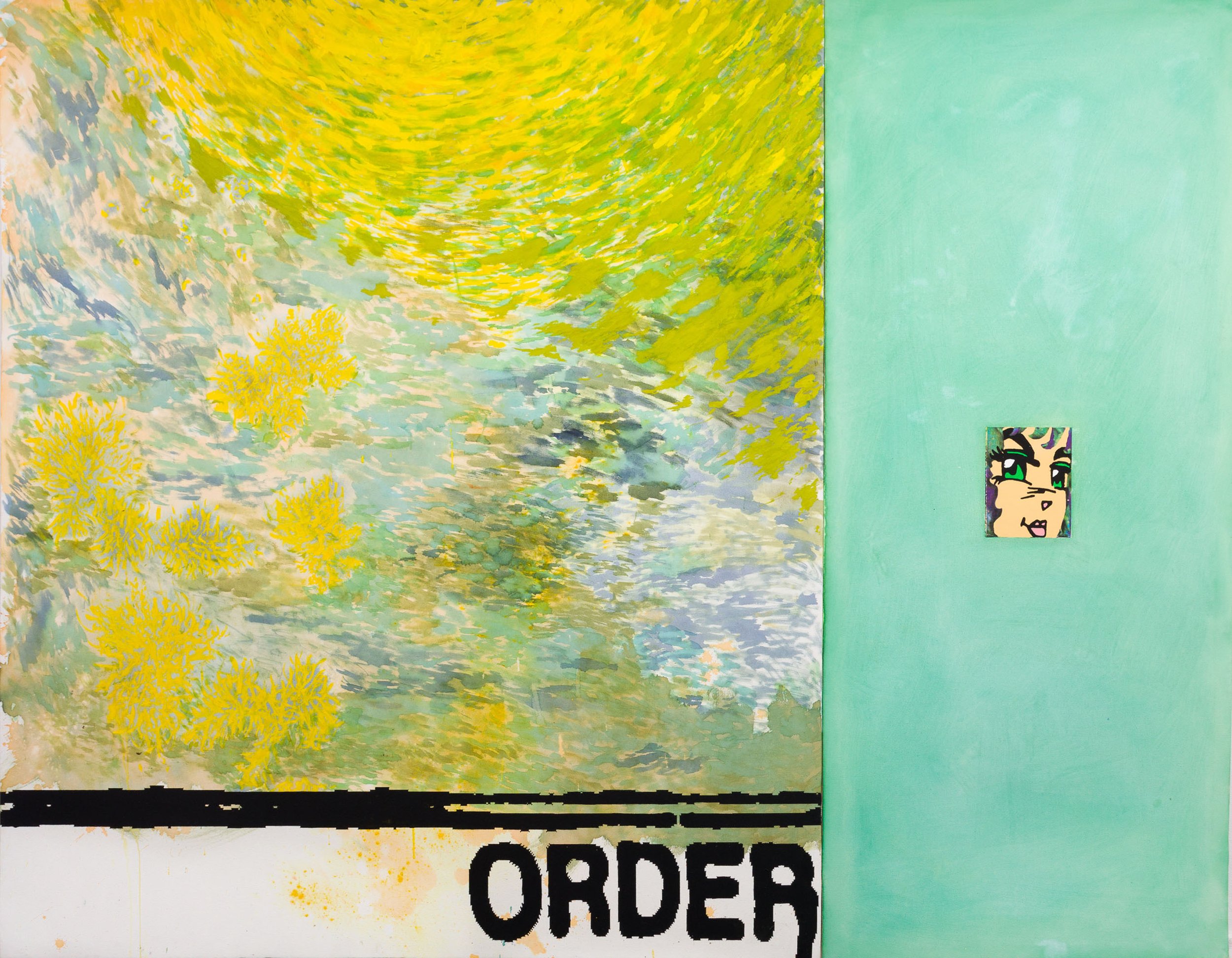
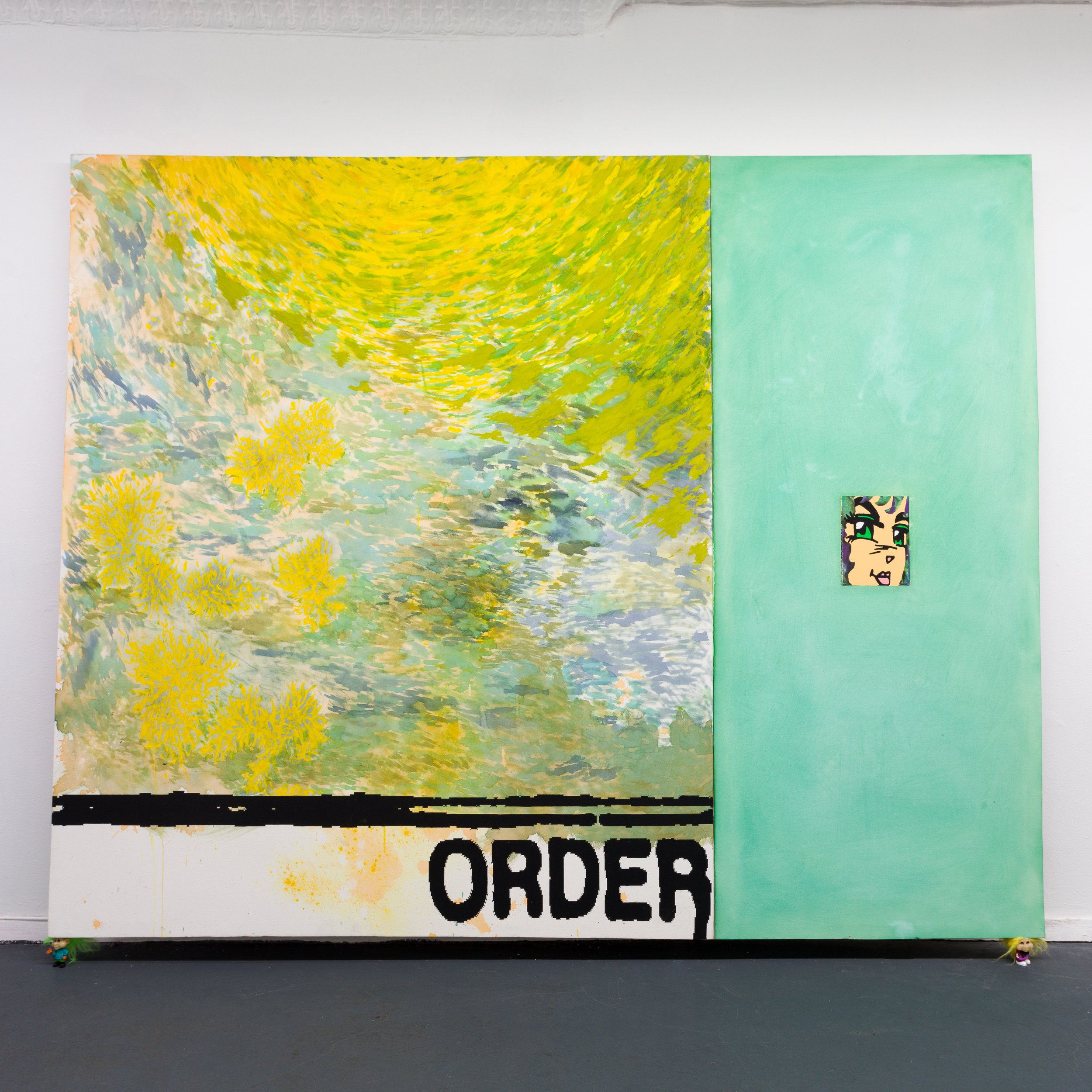
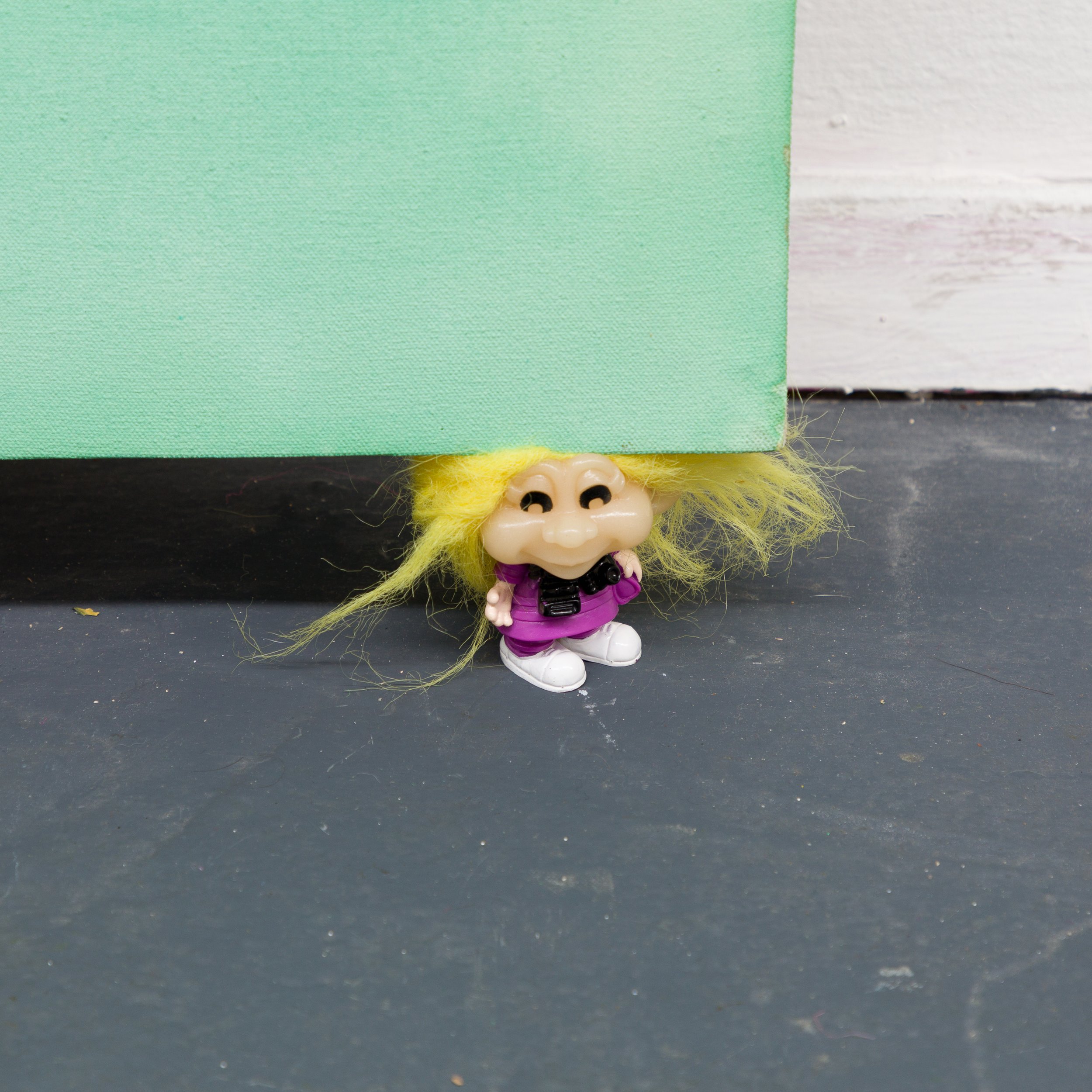
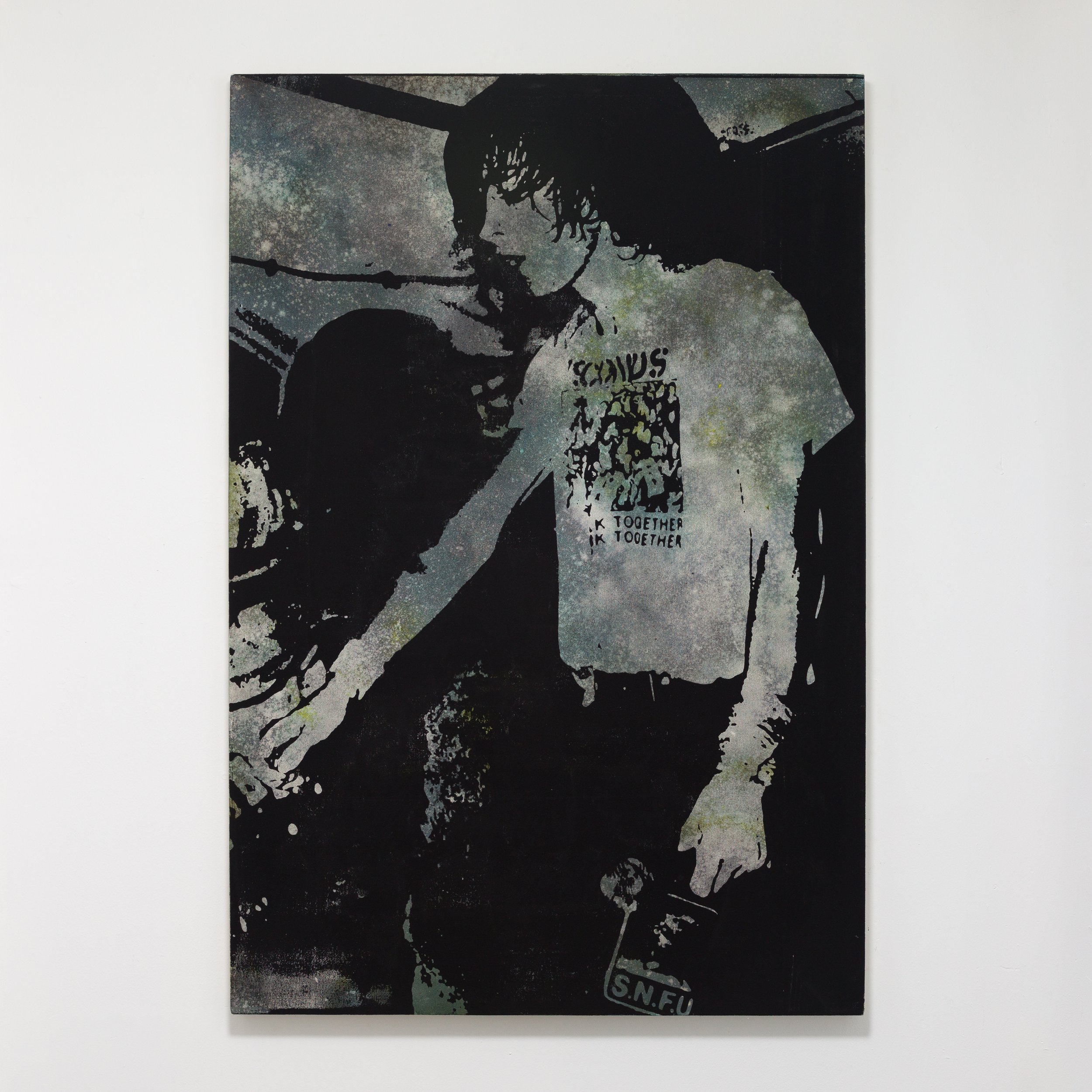
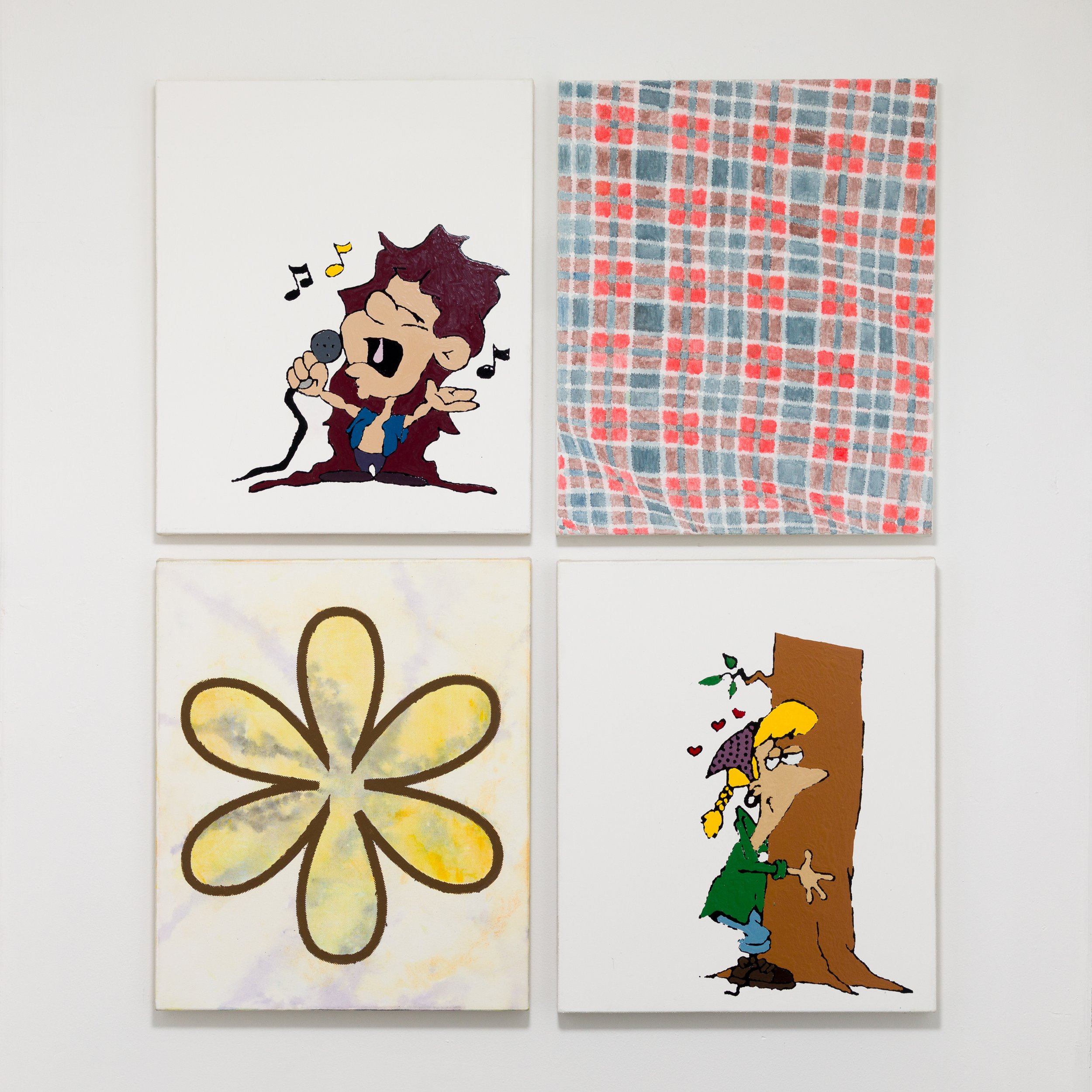
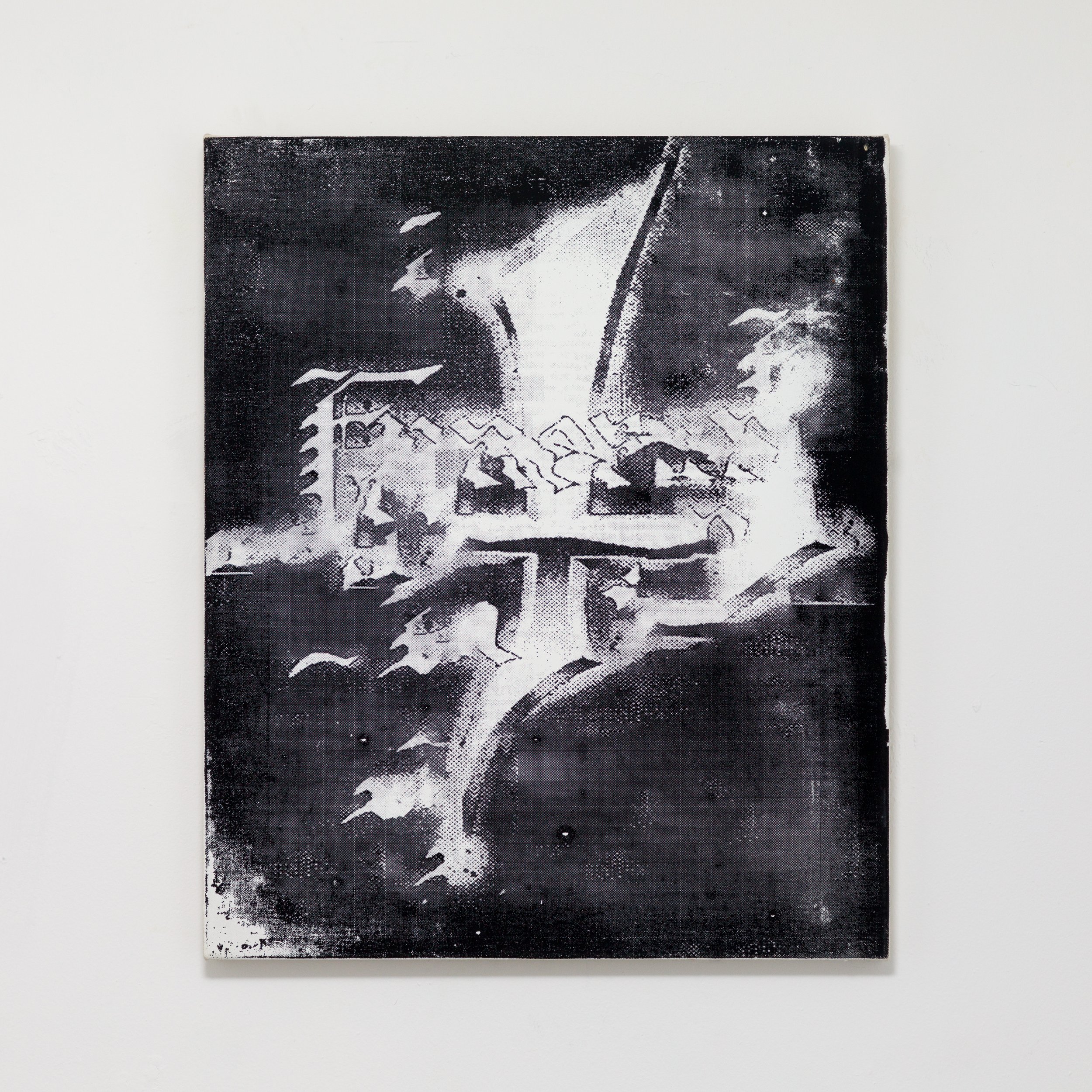
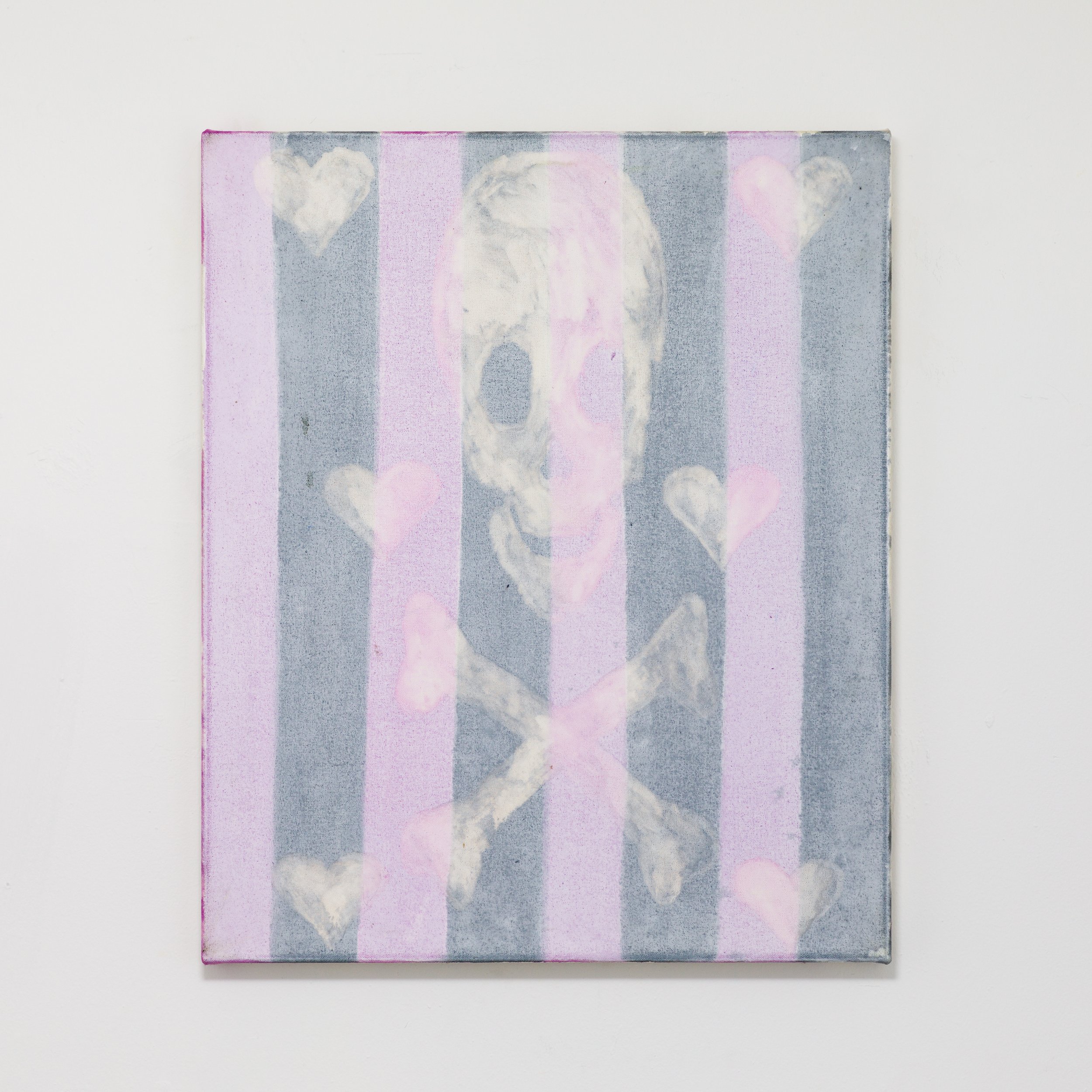
Installation photography by Stefany Lazar
